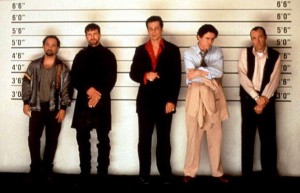 [1]In 2007, the General Assembly enacted the Eyewitness Identification Reform Act, G.S. 15A-284.50 et seq. The heart of the Act is G.S. 15A-284.52, which lays out rules for conducting lineups, whether live, i.e., involving the actual suspect and several other fillers, or by photo array, i.e., involving a picture of the suspect and several other fillers. (As an interesting sidebar, I’ve taught about the Act to several groups of officers, and of the 100+ officers I’ve talked to, only two or three have ever conducted a live lineup. Apparently, it’s just too difficult to find appropriate fillers, especially in smaller jurisdictions, and it’s a headache to ensure adequate security.)
[1]In 2007, the General Assembly enacted the Eyewitness Identification Reform Act, G.S. 15A-284.50 et seq. The heart of the Act is G.S. 15A-284.52, which lays out rules for conducting lineups, whether live, i.e., involving the actual suspect and several other fillers, or by photo array, i.e., involving a picture of the suspect and several other fillers. (As an interesting sidebar, I’ve taught about the Act to several groups of officers, and of the 100+ officers I’ve talked to, only two or three have ever conducted a live lineup. Apparently, it’s just too difficult to find appropriate fillers, especially in smaller jurisdictions, and it’s a headache to ensure adequate security.)
There are quite a few rules in the statute, which goes well beyond the constitutional minimum in ensuring that lineups are conducted in a manner that is not suggestive. Yet the question that I am asked the most often doesn’t have to do with any of the specific procedures set out in the statute. Instead, it has to do with whether a lineup is required at all. It usually arises as follows. Law enforcement agency A is investigating suspected drug dealer D. Agency A brings in an officer from another agency to make an undercover buy from D. We’ll call him officer U. Officer U gets all dressed up, goes to D’s place of business, and makes a buy. None of the officers from agency A are able to see the transaction, because it takes place inside. Officer U returns to agency A’s headquarters and turns over the drugs. The officers from agency A want to confirm that Officer U did, in fact, buy the drugs from D. Must Officer U be shown a lineup in compliance with G.S. 15A-284.52?
The answer is no, because Officer U need not be shown a lineup at all. Instead, Officer U can participate in a photo showup: he can look at one picture of D and confirm whether or not D is the person from whom he bought the drugs. In general, G.S. 15A-284.52 doesn’t tell you when to hold a lineup, it only tells you how to hold it. If Officer U is shown a lineup, of course, it must comply with the statute. But he needn’t be shown one at all.
One word about showups. Most courts view showups as inherently more suggestive than lineups, meaning that identifications that result from showups are more vulnerable to challenge in court. See generally Robert L. Farb, Arrest, Search, and Investigation in North Carolina 212 (2003). Still, in this context, where showup takes place shortly after the buy and the person making the identification is a trained officer, the likelihood of suppression is low. Cf, e.g., Wayne R. LaFave et al., Criminal Procedure s. 7.4(f) (3rd ed. 2007) (noting that showups “are commonly permitted when they occur within several hours of the crime”).
Finally, I’m hoping that my use of the photo above falls within the fair use doctrine. It’s a promotional image for the move The Usual Suspects, which I highly recommend.
1 Comment To "Lineups, Showups, Undercover Buys, and G.S. 15A-284.52"
#1 Comment By Criminal Justice College Blogger On April 9, 2009 @ 10:43 PM
I agree in regards to the suggestive nature of showups.
When I was a witness to a crime a photo lineup was furnished. I had to go through each image individually and eliminate anyone who was not present during the commission of the crime before seeing the next picture. 5 out of 6 suspects were eliminated, with one left standing.
I later read that this was a new, or rather research based, tactic in my state, as prior photo lineups required to pick the suspect by looking at all six pictures at once.
I feel that the way I was provided the lineup served the purposes of justice the best. An absolute elimination leaves less doubt and fewer convictions of innocent.